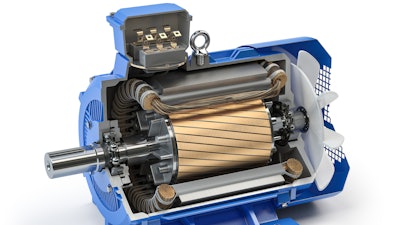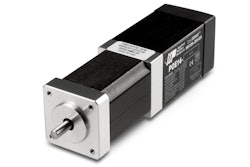
‘How does an actuator work’ is a question we hear fairly often here at Actuonix, and we understand why. Linear motion can involve some complex concepts and hardware and sometimes can be a little challenging to wrap your head around. Keep reading and we will help you better understand the actuator definition in terms of components and uses.
What is an Actuator?
Simply put, an actuator is a device that converts energy into motion. For electric linear actuators, this means converting the rotary motion of an electric motor into linear motion. Electric motors are not new technology, and have been around for nearly 200 years! For much of that time, converting the rotary motion of an electric motor to linear motion involved complex setups utilizing gears, belts, pulleys and other hardware. It was complex and expensive.
When linear actuators came along, all this changed. They save engineers and product designers the difficulties and hassle of engineering a linear stage from large and awkward motors, servos, gears, and rods.
When we talk about linear actuators, we often discuss the trade-off between force and speed. However, to fully appreciate this, it’s useful to understand how a linear actuator works, and what is going on inside the actuator during operation.
How Does an Actuator Work?
An electric linear actuator is a mechanical device that converts an input signal into physical motion or force. It achieves this by utilizing various mechanisms, such as motors, gears, rods and screws, to convert the rotary motion of a standard electric motor into smooth linear motion.
Below, we will dive into each aspect of how an actuator works including the internal components, control types and aspects that affect actuator performance.
What’s inside an electric linear actuator? Let’s have a look. Most electric linear actuators operate in roughly the same way.
Components of Actuators
An actuator consists of several key components that work together to convert rotational motion into linear motion. Here are the components that you will find in a typical electric linear actuator:
Electric Motor
The motor generates the rotational force that drives the actuator. This is typically through a gearbox assembly.
Gearbox
The gearbox lives between the motor and the lead screw. The gearbox is responsible for determining the speed and force of the actuator. Different gearing setups result in different force/speed combinations.
Lead Screw
The lead screw is where rotational motion is converted to linear motion. In a typical actuator, the lead screw spins with the output shaft of the gearbox. A captive block or nut is mounted on the lead screw and moves along the length of the screw as it spins.
Rod
Rod actuators have a rod assembly that is mounted to the nut and moves up and down the lead screw with the nut.
External housing
Most actuators are encased by an external housing that keeps the components all in their proper place as well as protects them from the elements.
Other components
You may find other electronics within an actuator. This can vary a lot from model to model but some common components are end limit switches, potentiometers, and circuitry to support other functions.
Common Questions About Actuators
How to adjust an actuator stroke?
Most linear actuators do not have adjustable limit switches. That said, you can adjust the stroke length in a variety of ways depending on your specific actuator. Some options include external limit switches, software limits in controller code and custom LAC board settings.
What is the duty cycle of a linear actuator?
This varies by device. Consult the manufacturer of your specific actuator for information on duty cycle.
What happens if you run an actuator to a hard stop?
Running to a hard stop is one of the fastest ways to destroy a linear actuator. This can cause motor failure, mechanical stress, overheating, inaccuracy and will reduce the life of the device.
This article was authored by the experts at Actuonix Motion Devices, Inc. and has been reprinted with permission. For more information on Actuonix, visit www.actuonix.com.























